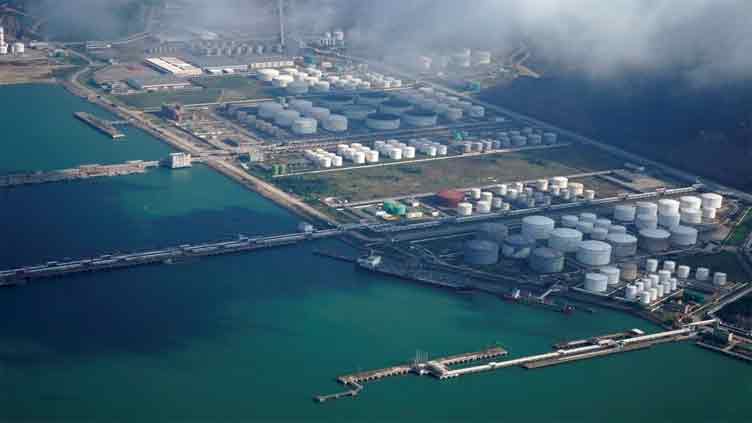China's June crude imports soar 45.3pc, total exports fall 12.4pc on previous year

Business
Drop in exports is the worst since the onset of the COVID-19 pandemic more than three years ago
BEIJING (Reuters) – China's crude oil imports in June jumped 45.3 per cent on the year, customs data showed on Thursday, with refiners building up inventories despite tepid domestic demand.
Crude imports in June totalled 52.06 million metric tons, or 12.67 million barrels per day (bpd), the data from the General Administration of Customs showed.
This represents the second highest monthly figure on record, and a substantial increase on the 8.72m bpd imported in June last year, when the economy was battered by widespread COVID-19 lockdowns.
Crude imports also held their upward momentum on a month-on- month basis, up 4.58pc from May's 12.11m bpd.
Total imports for the first half were 282.1 million tons, up 11.7pc from the 252.52m of the corresponding period last year.
Teapot refiners in the eastern province of Shandong have stepped up runs as authorities lifted curbs on the import of diluted bitumen, helping to ease inventory pressure at its ports.
More broadly, however, inventories continue to rise against an uncertain macroeconomic backdrop. Commodities consultancy Vortexa estimated onshore crude inventories at 980 million barrels at the end of June, just 20 million barrels below an all-time record in August 2020.
While kerosene demand is up strongly on the year, boosted by a resumption in flights after the removal of curbs on travel, weakness in the manufacturing and property sectors has hurt demand for diesel, despite stimulus measures by the government.
EXPORTS FALL
China's exports fell 12.4pc in June year-on-year, while imports contracted 6.8pc, customs data showed on Thursday, suggesting manufacturers are struggling to find buyers while overseas economies wrestle with inflation and rising interest rates.
A Reuters poll of economists had forecast exports to have shrunk 9.5pc and imports to have fallen 4.0pc.
The drop in exports was the worst since the onset of the COVID-19 pandemic more than three years ago.
Momentum in China's post-pandemic recovery has slowed after a brisk pickup in the first quarter, with analysts now downgrading their projections for the economy for the rest of the year as factory output slows in the face of persistently weak global demand.
Policymakers are now reckoning with the prospect of prolonged slower growth in the world's second-largest economy of around just 3pc annually, according to economists' forecasts. That is less than half the rates typical throughout recent decades and creates the feel of an economy in recession.
Chinese factory activity has been shrinking in recent months, while consumer prices teetered on the edge of deflation in June and producer prices fell at their fastest pace in more than seven years.
South Korean shipments to China, a leading indicator for China's imports, fell 19.0% last month, the smallest decline since October but suggesting demand for semiconductors and other components used to manufacture electronic goods remains weak.
Since taking up his post in March, Chinese Premier Li Qiang has talked a good game on rolling out policy measures to boost demand and invigorate markets, but few concrete steps have been announced and investors are growing impatient
The government has set a modest GDP growth target of around 5pc for this year, after badly missing the 2022 goal.

